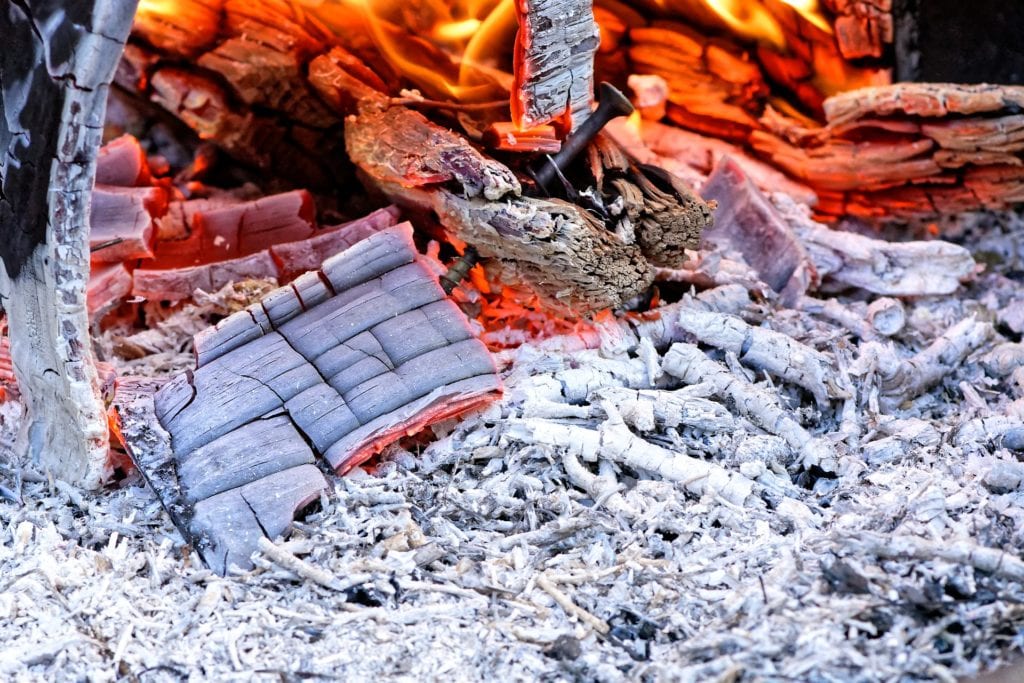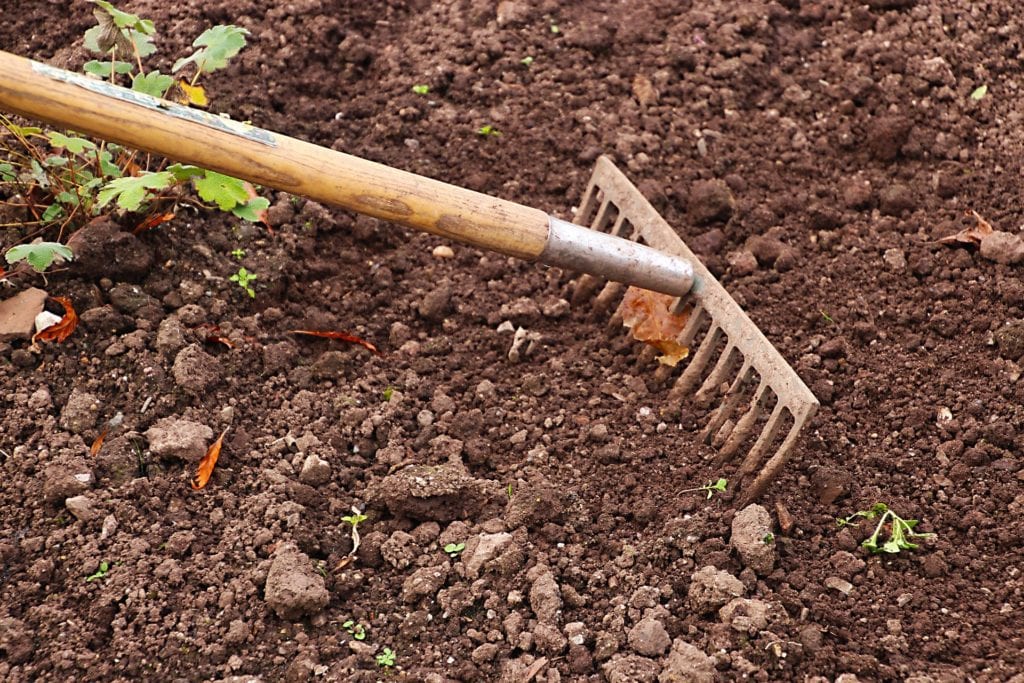When talking about fertilizer, you will probably think of the expensive fertilizers from specialized stores. These come in a wide variety of compositions and achieve a very specific effect.
Sometimes a useful and inexpensive fertilizer can be much closer than you think. Wood ash is considered an insider’s tip for providing some plants with the nutrients they need so that they grow magnificently.
How suitable is ash as a fertilizer actually and what you need to pay attention to when using it?
Contents
- 1 Which ash is suitable as fertilizer?
- 2 Composition of the wood ash
- 3 What effect does the ash achieve as a fertilizer?
- 4 Deacidify soil
- 5 Provide nutrients
- 6 Effective against moss
- 7 What plants is ash compatible with?
- 8 The correct application
- 9 How much fertilizer do you need to use per m²?
- 10 Use the wood ash as fertilizer
- 11 Author
Which ash is suitable as fertilizer?
Ash is generally considered to be the residue that remains after organic materials have been burned. Not every raw material you can use as fertilizer, and therefore it is important to pay attention to the source material.
If you want to use ash as fertilizer, this usually means the wood ash. The ash from your fireplace is also suitable for this purpose, as long as it is an untreated and natural wood.
You can also use the ashes from paper or plants as fertilizer. The important thing is that they are natural raw materials.
Not usable for fertilizing the soil are, for example, printed paper, briquettes or treated wood. These contain ingredients that have no place in the soil and can even cause damage.
Therefore, leave the ash urgently only wood, straw, paper and plants, which have not been treated. These contain useful substances that are readily absorbed by the soil and growing plants.
Composition of the wood ash

Actually, it may be surprising that the ash should be suitable for fertilizing. May it actually only burnt remains, which are generally considered waste.
But it is not quite so simple in relation to the garden. The wood ash consists mainly of calcium. In the wood ash the portion amounts to approximately 25 to 45 per cent of the total weight.
Furthermore, the wood ash contains magnesium and potassium. These are represented in a range of about 5 percent. Phosphorus pentoxide still makes up a noteworthy proportion of about 2 to 3 percent.
The other constituents include:
- Iron
- Manganese
- Sodium
- Boron
These nutrients and mineral trace elements are important for plants to grow optimally and enjoy good health.
On the other hand, it becomes critical if you use treated wood or an unsuitable ash. Then you could unpleasantly poison the soil with heavy metals such as lead, cadmium or chromium.
In the case of suitable ash, however, these harmful substances are not present, so you can rely entirely on the positive properties.
What effect does the ash achieve as a fertilizer?
If you already use the soil economically for several years, nutrients are continuously removed from it. You can counteract this with a suitable fertilizer, but the soil quality often decreases over time.
Deacidify soil

You can recognize this primarily by the fact that the pH value of the soil drifts into an acidic range. Ash is strongly alkaline. If you spread the ash, acidic soils will be neutralized. In the optimal pH range, plants grow and absorb nutrients better. This makes wood ash an effective alternative to sod lime. If you use a fireplace in which you use natural wood, you can reuse the resulting ash. In this way, you put the ash to a useful purpose and add value to the soil.
Provide nutrients
Plants need plenty of nutrients to grow optimally. If these are not present in the soil, they must be supplied from the outside. Wood ash is considered rich in nutrients and contains calcium, potassium and lime. Only nitrogen is missing from the contents, so you need to apply this additionally.
Effective against moss
Moss and other weeds always spread when the lawn is weakened and the soil is less than optimal. In an acidic soil, clover grows in the lawn and moss could also crowd out the greenery.
Fertilizing with ash is an easy way to help acidic soil return to a healthy pH level. Then your lawn will feel better and be more resistant to the weeds.
What plants is ash compatible with?
Wood ash proves to be powerful and effective in affecting the properties of the soil. However, the effect of ash is so intense that it can quickly go in the other direction. An over-calcified soil is also a problem for many plants.
Therefore, you should apply the ash only to plants that have no problem with a calcareous soil and have a higher calcium requirement. They are relatively insensitive and even an overdose of ash they can cope without visible consequences. Use the ash as fertilizer on these plants without hesitation:
- Tomatoes
- Brussels sprouts
- Roses
- Gladioli
- Geraniums
- Fuchsias
- Vines
- Raspberries
- Woodruff
Some houseplants are also more tolerant of the high lime content and will tolerate it if you use the ash as a fertilizer.
On the other hand, the following plants are more sensitive. They feel comfortable in a slightly acidic soil, so there is a risk of the pH rising too much with ash. Refrain from using wood ash on these plants:
- Rhododendrons
- Blueberries
- Ferns
- Fruit and vegetable plants
- Possible risks fertilizing with ash
Using the ashes as fertilizer is highly risky for plants intended for later consumption. Rarely can it be said beyond doubt that the ash is free of pollutants or heavy metals. When burned, heavy metals may remain in the ash and be absorbed by the plant after fertilization.
If you want to use a larger amount of ash, have it analyzed in advance in a laboratory. There you will be confirmed whether the ash is harmless and suitable for use as fertilizer.
It is better not to take any risks and fertilize the soil only with the wood ash if you are growing ornamental plants on it. No health risks are to be expected with these.
It is not only questionable whether heavy metals are contained. You also do not know what the exact composition of the wood ash is. Consequently, you do not know how much calcium and other nutrients you have actually applied. If your plants are very sensitive, then it is better to use a liquid fertilizer from a specialty store. There you have a greater certainty about the content and can better dose it.
The correct application
The application of wood ash is not complicated. Nevertheless, you should follow a few basic rules so that the application proves effective.
To protect your own health, it is appropriate to wear gloves. The wood ash has a high pH value, which attacks your own skin.
Apply the wood ash only on days when there is no wind. This way there is no risk of the fertilizer blowing away and uneven application in the area. Slightly moistening the ash will prevent it from being carried away by the wind.
Application in conjunction with nitrogen fertilizers or fertilizers containing phosphates is not recommended. Hazardous substances may be produced that are harmful to the soil and pose a health hazard.
How much fertilizer do you need to use per m²?
The amount of wood ash depends largely on the pH of the soil. If this is in a range of 4, you should apply around 200 to 400 grams of ash per square meter. However, this application should not be done annually. An interval of 3 to 4 years is sufficient to raise the pH.
If the soil is only slightly acidic, then lower amounts of 100 to 200 grams will suffice. It is better to proceed more cautiously to avoid overliming. Then you can fertilize with the ash and benefit from the positive effect in the long term.
Use the wood ash as fertilizer
After some time of cultivation, soils become acidic. Instead of compensating for this with a lawn lime, you can use wood ash for this purpose. The plant or wood residues contain some useful nutrients that will have a positive effect on the garden.
Make sure that it is ash from untreated and natural raw materials. If you have fertilized the garden with ash, you can calmly wait and see how the pH changes and gets into the desired range.
However, for sensitive plants, the ash as a fertilizer poses some risk, because the amount of ingredients vary and overcalcification is possible. With the usual fertilizers from the specialized trade, a more precise dosage is possible, so you have to weigh for yourself whether the ash as fertilizer is suitable for your application.

